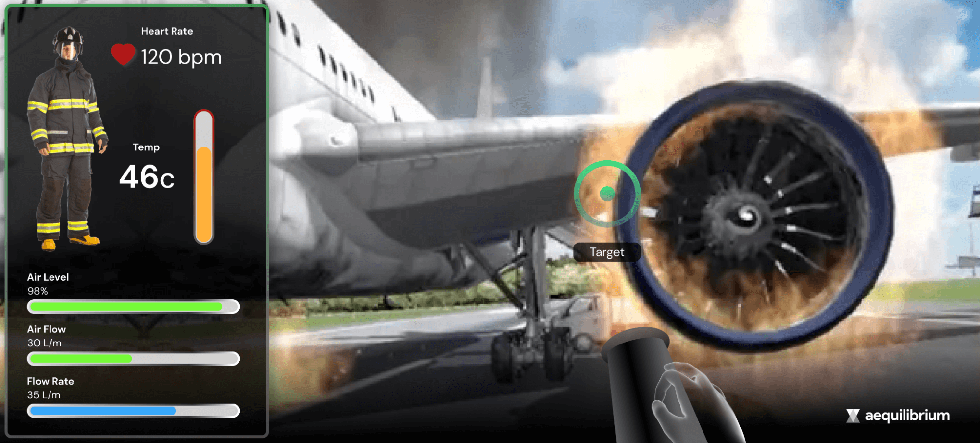The smartphone has revolutionized the digital industry and continues to be an indispensable part of our lives. It was not just a smaller and portable computer that could render the websites designed for laptops; but a device that could afford a plethora of new experiences and interactions, like photography, texting, social media, and other mobile applications. It comes as no surprise that today there are 7.4 billion mobile phones, out of which 6.6 billion are smartphones.
Americans, for example, spend about 5.4 hours a day, checking their phones about 63 times per day on average!
The metaverse is seen as the evolution of the internet and will bring over $2.16 trillion by 2035. Gartner reported that by 2026, 25% of people will be spending at least one hour a day in the metaverse for the purpose of work, shopping, education, socializing, and/or entertainment. Citi Research predicted that by 2035, half of smartphone users could replace their phones with XR technologies. (Naik, 2021). The reason for this is like the smartphone, XR devices, and the metaverse will also revolutionize the way we interact, collaborate, communicate, and socialize. This change will manifest across all domains and industries in the near future.
In our previous blog posts, we took deep dives into how XR revolutionizes and how people shop and bank. In this article, we will explore how XR helps progressive organizations to train their staff more effectively across all kinds of industries, and increase employee engagement and productivity while reducing training risks and costs.
A survey involving over 300 learning and development leaders across a variety of industries, revealed that over two-thirds of the respondents had either already implemented a VR training program for soft skills, or have plans to implement one within the next two years.
Introduction
First, a quick recap on What is XR?
XR is the extended reality, an umbrella term that includes virtual, augmented, and mixed reality (Refer to Image 1):
- In Augmented Reality (AR) using transparent glasses, you can view the reality, typically using digitally enhanced overlays, which enable context-sensitive interactions
- In contrast to AR, Virtual Reality (VR) provides a complete immersion (visual, audio, tactic tile, smell, etc.) into a digital environment
- In Mixed Reality (MR), users interact with an environment consisting of both real and virtual worlds

Image 1: Different Types of Realities – AR, MR, and VR
What is The Metaverse?
It is a collection of persistent virtual worlds and augmented reality (which brings digital enhancements to the physical world), typically multi-dimensional (3D, potentially enhanced with other types of sensory experiences, like touch, smell etc), and generally persistent, interactive, and social (Refer to Image 2). These environments provide the most engaging experience when accessed via specialized or multi-sensory devices for VR or AR. They also work on other devices, like smartphones, tablets, glasses, etc.

Image 2: The Metaverse
The metaverse is the next stage in the evolution of the internet, perceived as a $13 trillion a year opportunity. Over a period of time, it will affect all industries and companies, irrespective of geography or size. Progressive companies are already acting, experimenting, and taking the lead on this gargantuan opportunity.
Importance of Training and Up-skilling
Every successful organization focuses on training, learning, and development (TLD) initiatives.
As a result, employees develop enhanced skills and capabilities to perform their jobs better. They also get the notion that their employers care for their personal growth and therefore invest to upskill them. This reflects positively on the company’s culture, ensuring better outcomes.
Often, it is difficult for many organizations to reflect a positive return on investment on their TLD initiatives.
As per an estimate, only 10% effectiveness is achieved out of the $200 billion invested every year in corporate training and development in the United States.
As per research, these are the common challenges faced while implementing effective learning programs:
- Generally, training takes place simultaneously with the other work. Employees are expected to not only focus on their training but also to complete their daily deliverables in time. Therefore, in spite of attending the training, the trainees fail to invest time to hover over their newly gained knowledge and to implement them.
- Trainings are mostly conducted outside of the organization. The gap between the workplace and the classroom makes it difficult for trainees to apply their newly acquired knowledge to their work.
- Post training, it is expected that the trainees would apply their knowledge to their work, with zero follow-ups from their instructor. Therefore, the knowledge is never practically applied.
To address these challenges, experts have come up with an alternative approach called, learning in the flow of work.
As per a recent survey from McKinsey, in this era of digitization, accelerated by the onset of the pandemic, digital adoption has taken huge leaps at organizational and industry levels. Remote working is made possible with companies working and training their employees in the digital space using new technologies and e-learning.
In 2018, Research and Markets have forecasted that the e-learning market will triple by 2025 to reach $325 billion. This estimate is turning to reality as companies are investing to drive transformation in corporate learning methods to build resilience and to thrive its way into the new digital economy.
Upskilling
Technologies like automation, combined with Artificial Intelligence (AI) and Machine Learning (ML), will replace many repetitive and mundane jobs. Combined with XR, they will also generate millions of new jobs, which will be both more rewarding and better paid.
Given the competitive job market, companies will need to be prepared ahead of time to train and upskill their staff, in order to achieve success in the knowledge economy.
Leveling the field for hybrid work
Following the pandemic, most companies are switching to a hybrid model of work, which comes with both benefits and drawbacks. For example, if a certain percentage of staff are regularly visiting the office, they are more likely to be noticed, learn more from osmosis, and become more visible for rewards and promotions, compared to the other employees who prefer to work mostly from home. Through VR, employees can spend time together from the convenience of their homes, while building rapport, socializing, and strengthening the culture of the company.
For example, in Aequilibrium there is a culture of connecting with company-wide employees bi-weekly to share business updates via announcements, and also there are fun activities hosted bi-weekly to connect better with colleagues. The UX team often gathers in virtual spaces to brainstorm new ideas (Refer to Image 3). We also have our own avatars in the VR world.
Given the competition for talent, the great resignation, etc., providing these types of environments can open experimentation and can help in looking for novel ways to encourage collaboration for remote teams. The progressive FIs using XR for their staff are likely to have better employee retention and engagement in the future.
Humanizing digital interactions
Done right, XR can augment and elevate digital interactions. For example, Aequilibrium has developed a VR tool specifically designed to improve creativity and collaboration for Agile distributed teams.

Image 3: Humanizing Digital Interactions
Democratization of expertise
As per Lowe’s innovation lab, it is important to empower users by reducing barriers to entering the market. Some activities can be complex and are heavily dependent on expert advice in order to get them done. People may get concerned about the implications of getting it wrong or even getting the self and others hurt in the process. Through emerging technologies and remote collaboration, these can be performed at ease.
Training modules and assistance can be provided through AR/VR/MR. In this way, people will have more power in their hands to solve situations without the fear of getting hurt or waiting for human assistance. The guidance can be provided through e-learnings or step-by-step assistance through audio or/and visual support.
Why avail XR for Training?
Better Training Outcomes
A study conducted by PwC in 2020 suggested that at-scale VR can be significantly more cost-effective than traditional soft skills training options. As per a finding, employees completed VR programs up to 4 times faster than in-person training, and 1.5 times faster than e-learning programs. The immersive experience made it easier for learners to stay focused. The study also found that employees who completed VR training
felt almost 4 times more emotionally connected to the content than the classroom learners, and more than twice as connected as e-learners, illustrating the huge impact that VR can make. By increasing training velocity and enabling more trainees to become proficient in less time, can deliver faster and better results. Investing in training improves work quality across industries.
Trainees are willing to engage in optimized user engagement driven by solutions with the option to revisit and repeat exercises. This results in improved retention as per the research, with VR learners being:
- 275% more confident than the rest of the respondents in the study
- 4 times faster than classroom training
- 4 times more focused than e-learners
- 3.75% more emotionally connected to the content than classroom learners
Strivr mentioned that one of the most impactful ways for companies to train employees is through VR. Through case studies and client deployments, they discovered that with VR employees get more engaged with the overall training, learn up to 96% faster, and retain 16 times more information and knowledge.
IBM Expert Insights stated that VR training can reduce training time by 40% and enhance employee performance by 70% in comparison to traditional methods of training.
XR headsets can be easily deployed to any location, allowing multiple trainees to be trained together from anywhere as per need. Teemu Pöysti, Lieutenant Colonel, Chief of Air Force Training stated that advanced simulators used in live fighting training can result in “More motivating and efficient training”.
Enhanced Cost Effectiveness
Manual training demands trainers and trainees to be present in a particular space and also involves instruments in large numbers or multiple rounds of training, to accommodate trainees with hands-on experience. In the defense and aerospace domain, there are dedicated training centers with huge and expensive prototype machinery. Also, to train in real aircraft, there is both risk of damage and also an opportunity lost cost. As a result, the total cost of training can go up to millions of dollars yearly.
This cost of training can be reduced up to 99% with immersive learning environments, which can replace or supplement traditional training solutions. The investment-to-profit ratio is better and this can be used over multiple batches of trainees and can accommodate more people from anywhere in the world by being virtually connected.
Empowered User Experience
Users, both trainees, and trainers can take part in the training from anywhere without the onus of traveling to a particular location. Training can be revisited for reference with no extra cost involved. The risk of training in virtual space is zero. For example, in healthcare, trainees can practice in simulators instead of on live patients. The users will experience a virtual and risk-free platform to connect, practice, and collaborate with others.
XR Training in Various Industries
Traditional educational tools may often feel boring or artificial, while immersive VR training creates highly memorable and impactful experiences, without the potential risk of real-world consequences. The top benefit of XR in training is that it offers realistic, cost-effective, and impactful learning experiences, even in the most dangerous scenarios.
High-Risk Occupations
Real-life stress factors or natural phenomena like fire, smoke, flood, or earthquakes can be dealt with using alternative reality which can take place in a completely safe and immersive environment. It is difficult, expensive, and relatively impossible to replicate life-threatening situations for training using traditional methods alone.
Complex and steep requirements are essential to implement an effective training program that takes into account hazardous, risky, and out-of-control training scenarios. It is also beneficial to consider areas like work-related injuries, environmental and regulatory constraints, and the cost of traveling, equipment, and facilities. Consequently, it is seen that XR training is extensively adopted across high-risk industries such as law enforcement, military training (army, navy, and air force), firefighting departments, nuclear plants, and more.
Firefighting
To become an active-duty firefighter, you need to spend about 600 hours in training, over the course of twelve to fourteen weeks. Once you become a firefighter, you spend the majority of your time in training. Though firefighters train daily on how to handle fires of all kinds, fire safety training for the workforce can be no less than a riddle with challenges.
Once, while visiting an office space, I was stunned by the number of people gathered for a fire drill. Initially, I was anxious to learn about a fire, and a little later a bit took aback to know that was a false call. Owing to the fact that fire outbreaks are not very uncommon in the workplace The National Fire Protection Association mentioned that office properties in the US face an average of over 3000 fires each year. As a result, many people get impacted and injured which also causes massive damage to properties.
So, indeed fire training is needed. During training, giving an idea of a real-life fire is not possible or recommended and people may get exposed to toxic pollutants which may cause oxygen depletion, injuries, irritation, and stress. Therefore, employers prepare employees with theoretical knowledge with minimal real-life training. What if I told you that virtual fire training is possible? Training with VR Fire Trainers can enable people to land in a simulated environment with fire, smoke, and extinguishing agents to navigate out of the problem situation (Refer to Image 4).
In the end of it, people take away knowledge with confidence and zero risk of being harmed.

Image 4: Firefighter Training in VR
Military
The application of VR technology in the military paradigm is to make trainees and officers better at using equipment, navigating through different transport options, gaining experience in potential combat situations, medical training, and more.
One of the advantages of VR training in the military is that it offers the functionality to immerse users in a virtual yet safe world. This feature makes the training relevant in the defense sector, as it offers militaries and defense contractors ways to gain invaluable experience in dealing with high-stress and life-threatening environments from the safety of training rooms.
AR is often used to solve challenges and also for training purposes. AR is effective for warfare simulations, military sand tables, battlefield visualizations, and other applications that require a realistic representation of defense activities.
Other benefits include:
- First-hand experience with trainees
- Consistent and scalable training
- Cost-effectiveness
- Measurement and performance tracking
- Better engagement
So, it comes as no surprise that the army has been one of the earliest and biggest investors in XR. Among the most notable engagements, in March 2021, Microsoft announced a contract with the U.S. Army for 120,000 augmented reality headsets, worth up to $21.9 billion for over 10 years. The headset enables soldiers to fight, rehearse, and train in one system. The contract came up a year and a half after Microsoft won a cloud contract from the Pentagon that could be worth up to $10 billion.
Similarly, DE&S has secured a £7.2 million contract with Bohemia Interactive Simulations (BISim) to deliver DVS2, a training environment capable of simulating multiple military environments and operations. Personnel will be able to train from anywhere in the world, across multiple terrains, with a wide range of weapons and equipment similar to the one used by 60 other countries, including 14 NATO allied countries.
Varjo, who provides high-immersion virtual and mixed reality products and services for advanced VR users, has offered several case studies for training and simulation, including their work with the Finnish Air Force, which provided pilot training with XR simulators, to enable the Finnish Air Force to simulate large-scale or dangerous training scenarios in a safe way to provide pilots with a new level of readiness before deployment. They can create highly realistic immersive training scenarios that can easily be modified or repeated. With VR and MR technologies, pilots can simulate conditions of live flying, interact with real cockpits, and access their own charts and documents by being in the virtual world (Refer to Image 5).
The feedback from these sessions has been very positive, with pilots and training officers describing the XR experience as “More motivating and efficient training while utilizing advanced simulators together with live flight training.”

Image 5: Military Jet fighter Training Simulation in VR
Nuclear Power Plant
For those of us who forgot or were unfamiliar with the world’s worst nuclear disaster which occurred in Ukraine in 1986, HBO’s Chernobyl brought renewed attention to the importance of preventing similar catastrophes from occurring again. This brought to the limelight the need to provide realistic and immersive training and simulations for the employees on the front lines of critical industries, helping workers to understand and prepare for the challenges of working under pressure.
It comes as no surprise that nuclear power plants around the world spend millions of dollars annually to build physical simulators where power plant operators can practice different training exercises, from small disturbances, such as a pipe leak, to severe accidents resulting from an earthquake, fire, sabotage, or from an act of war.
Varjo (a producer of high immersion XR devices) has partnered with FortumNuclear (one of the largest power generation companies in the Nordics) to provide a tailored solution for power plant operator training, using Varjo headsets. Using this technology, Fortum is able to train Loviisa nuclear power plant operators exactly like they would in a physical simulator, by investing a fraction of the price required for physical simulators.
Fortum can realistically simulate real-life stress factors or natural phenomena like fire, smoke, flood, or earthquakes, which are impossible to accomplish in a high-fidelity physical simulator.
Furthermore, the accuracy of operator performance assessment has been improved with eye tracking data and analytics. The results have been beneficial, therefore, about 90% of site workers in the Loviisa nuclear power plant have availed themselves the VR training.
Part II of this article will be published shortly. On September 22, read more about how XR makes an impact through training in other industries and the points to keep in mind when you are ready to start your journey with XR training practices.
Are you a progressive organization? Are you interested in using technology to craft remarkable experiences for your members and staff? Do you want more resilience, differentiation, and growth?
We’d be more than happy to organize a complimentary workshop to discuss your current status, objectives, and goals, and build a customized high-level strategy and tailored-to-fit digital roadmap for you.












